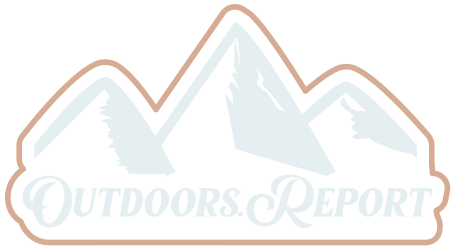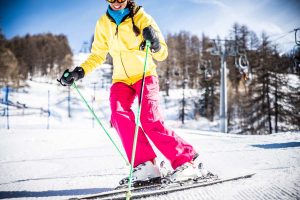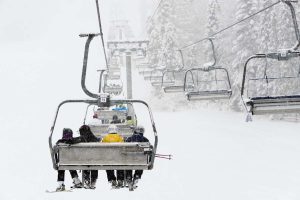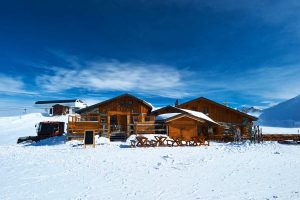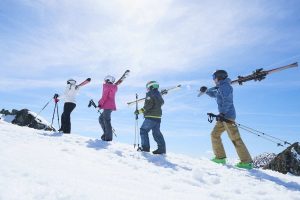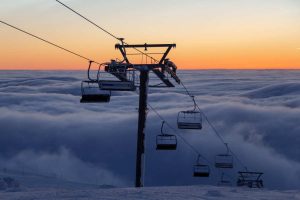Skiing is an exhilarating sport that can be enjoyed by people of all ages and abilities. Whether you are a beginner or an advanced skier, it is important to master the basics of skiing in order to stay safe and get the most out of your time on the slopes. In this blog post, we will discuss the essential equipment, key techniques, and tips to help you become a better skier. With the right knowledge and practice, you will be able to enjoy skiing to its fullest.
Equipment
When it comes to skiing, having the right equipment is essential to your safety and success. Skis come in a variety of shapes and sizes depending on your individual needs and skill level. Additionally, having the proper clothing and safety gear is essential to staying warm and protected while on the slopes. Ski poles can also be helpful in maintaining balance, as well as providing extra stability while skiing. Once you have the right equipment, you can start to learn the basics of skiing.
Types of skis
There are a variety of skis available to suit different skill levels and terrains. For beginners, it’s best to start with a wider ski that can provide extra stability and control. As you progress and become more comfortable, you can move up to a narrower ski that will allow for faster speeds. Additionally, there are different types of skis for different types of terrain. If you plan to ski in powder, for example, a wider ski with a wider waist will help you stay afloat. Whatever type of ski you choose, make sure it is the right size for you.
These are the various types of skis available:
- All-mountain skis: These are good for all types of terrain, from groomed slopes to powder.
- Freestyle skis: These are good for jumps, tricks, and terrain parks.
- Backcountry skis: These are designed for skiing in deep snow, such as in the backcountry.
- Carving skis: These are designed for making fast, sharp turns on groomed slopes.
- Powder skis: These are designed for skiing in deep, soft snow.
Clothing and safety gear
In addition to the right skis, having the proper clothing and safety gear is essential to staying safe and warm while on the slopes. Layering is key, so make sure to wear a base layer of breathable, moisture-wicking material, such as wool or synthetic fabrics. On top of that, wear an insulated mid-layer and waterproof outer layer. A helmet is also essential to protect your head from potential falls. Additionally, goggles are important to protect your eyes from the sun and wind. Finally, make sure to wear warm gloves or mittens to keep your hands warm.
Here are the most important pieces of ski clothing and safety gear:
- Base layer: Breathable, moisture-wicking material to keep you warm and dry.
- Mid-layer: Insulated layer to keep you warm.
- Outer layer: Waterproof layer to keep you dry.
- Helmet: To protect your head from potential falls.
- Goggles: To protect your eyes from the sun and wind.
- Wrist guards: To protect your wrists from injury.
- Knee pads: To protect your knees from injury.
- Back protector: To protect your back from injury.
- Gloves or mittens: To keep your hands warm.
Ski Poles
In addition to the right clothing and safety gear, ski poles are helpful in maintaining balance and providing extra stability while skiing. Ski poles come in a variety of shapes and sizes, and the right size for you depends on your height and arm length. Make sure to adjust the length of your poles so that they are slightly higher than your elbow when you are standing upright. Ski poles are also helpful for pushing off when you are skiing in deep snow.
The various types of ski poles include:
Alpine poles: These are designed for downhill skiing and feature a cork grip for comfort and a curved basket for better snow penetration.
Freestyle poles: These are designed for terrain parks and jumps and feature a rubber grip for comfort and a flat basket for better snow penetration.
Cross-country poles: These are designed for cross-country skiing and feature an ergonomic grip for comfort and a wider basket for better snow penetration.
Learning the Basics
Now that you have the right equipment, it’s time to learn the basics of skiing. Learning the basics will help you stay safe and gain confidence on the slopes. The most important skills to master are the snowplow, parallel turns, and stopping. With practice, you can become a competent skier and enjoy skiing to its fullest. Let’s take a look at each of these skills in more detail.
The snowplow
The snowplow is the most basic and essential skill when it comes to skiing. It is used to slow down and stop, and it is also the foundation of all other skiing techniques. To execute the snowplow, stand in a neutral position with your skis parallel to each other. Then, press the inside edges of your skis into the snow and angle them outwards, creating a “V” shape. This will help you slow down and eventually stop. Practice this skill until you feel comfortable and in control.
Here are some tips to help you learn the snowplow technique:
- Keep your weight centered over your skis.
- Angle your skis outwards and press the inside edges into the snow.
- Keep your legs bent and your knees close together.
- Look in the direction you want to go.
- Practice on different terrain and snow conditions.
Parallel turns
Once you have mastered the snowplow, you can move on to parallel turns. To execute a parallel turn, start by angling your skis into the direction you want to turn, then press the inside edges of your skis into the snow and lean your body into the turn. Make sure to keep your legs bent and your skis parallel to each other. With practice, you will be able to make smooth, controlled turns.
These tips will help you master parallel turns:
- Keep your weight centered over your skis.
- Angle your skis and press the inside edges into the snow.
- Keep your legs bent and your skis parallel to each other.
- Look in the direction you want to go.
- Practice on different terrain and snow conditions.
Stopping
The last basic skiing skill to master is stopping. To execute a stop, simply angle your skis into the direction you want to go and press the inside edges of your skis into the snow. Make sure to keep your legs bent and your skis parallel to each other. Then, gradually reduce your speed until you come to a complete stop. With practice, you will be able to stop quickly and in control.
These tips will help you stop quickly and in control:
- Keep your weight centered over your skis.
- Angle your skis and press the inside edges into the snow.
- Keep your legs bent and your skis parallel to each other.
- Look in the direction you want to go.
- Gradually reduce your speed until you come to a complete stop.
Improving Your Technique
Now that you have mastered the basics of skiing, it’s time to focus on improving your technique. To become a better skier, it is important to focus on your balance, core muscles, and weight transfer. With practice, you will learn to ski with more confidence and control. Let’s take a look at each of these techniques in more detail.
Balance
Balance is essential for skiing, as it helps you control your speed and direction. To improve your balance, practice shifting your weight from one ski to the other while maintaining a neutral position. This will help you stay in control and make smoother turns. Additionally, practice skiing with your eyes closed to further develop your balance and agility.
These are some tips that will help you improve your balance:
- Practice shifting your weight from one ski to the other.
- Maintain a neutral position.
- Practice skiing with your eyes closed.
- Focus on your breathing and stay relaxed.
- Work on your core strength.
Core muscles
Strong core muscles are essential for skiing, as they help you maintain balance and control. To strengthen your core, practice exercises such as planks, crunches, and leg lifts. This will help you build the strength and stability you need to stay in control while skiing.
These exercises can help strengthen your core:
- Planks: Hold yourself in a plank position for 30-60 seconds.
- Crunches: Lie on your back and do a crunch, bringing your chest towards your knees.
- Leg lifts: Lie on your back and lift one leg up as high as you can.
- Squats: Stand with your feet shoulder-width apart and slowly lower your body as if you are sitting in a chair.
- Lunges: Step forward with one leg and lower your body until your knee is bent at a 90-degree angle.
Weight transfer
Weight transfer is another important technique for skiing. To execute a weight transfer, shift your weight from one ski to the other while keeping your legs bent and your skis parallel to each other. This will help you maintain balance and control while skiing.
Some tips that will help you improve your weight transfer include:
- Keep your legs bent and your skis parallel to each other.
- Shift your weight from one ski to the other.
- Practice on different terrain and snow conditions.
- Focus on your breathing and stay relaxed.
- Work on your core strength.
Enjoy Skiing to its Fullest
Skiing is an exciting and rewarding sport that can be enjoyed by people of all ages and abilities. In order to get the most out of your time on the slopes, it is important to master the basics of skiing. With the right equipment, key techniques, and practice, you can become a better skier and enjoy skiing to its fullest.
More Skiing Posts
Tylor Bennett
An editor at Outdoors ReportTylor Bennett is a senior editor for the blogzine and also reports on breaking news based in London. He has written about government, criminal justice, and the role of money in politics since 2015.

